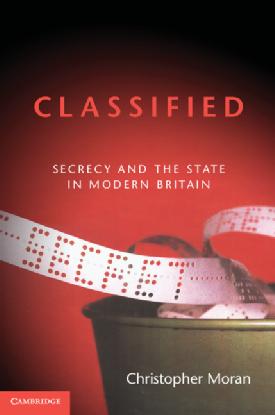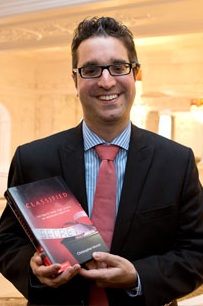Classified: Secrecy and the State in Modern Britain
|
|
* Winner of the St Ermin's Hotel Intelligence Book of the Year Award (2014) 'A fascinating study of how a long established democracy deals with the persistent conundrum of government secrecy in an open society. Essential reading for students of intelligence accountability, and especially timely given the current international discussion of leaks and information security.' 'Traditionally, people have preferred to feel, rather than to know, about the rights and wrongs of state secrecy in Britain. In his highly readable book, Classified, Dr Moran does the truth great service by exploring with fair objectivity the difficult middle ground in a revealing series of milestone case studies. Wherever one chooses to stand on this thorny, arcane, contentious and fascinating issue, Moran's book will certainly leave its readers far better informed.' 'A fascinating and timely account of how successive British governments have viewed official secrets and the sometimes extraordinary measures they have taken to protect them. Dr Moran puts into clear perspective how those views of secrecy have evolved through the years including use of the D Notice, a measure often viewed with envy by bureaucrats in Washington. A valuable contribution to the study of government secrecy, Dr Moran's work will enhance the reader's grasp of the fundamental issues raised.' 'A well-researched and fascinating book'. 'Authoritative but hugely readable book'. 'An academic by trade, Moran tells these stories, and plenty more, with a historian's care, but also with a real flair for narrative'. 'Classified...follows the maxim that history should not only educate but amuse. This deepy researched and wonderfully informative book is surprisingly entertaining as it takes the reader through the history of official secrecy in Britain from Victorian times to the present'. 'An outstanding book of reference which needs to be in every library. The standard of research, writing and readability is very high'. 'What Moran brings to the party is a mass of frequently fresh detail culled from extensive archival work, energetic exploitation of of recently released classified material, and some valuable oral history. The detail is organized into a lively and strongly argued narrative that will become an essential point of reference for all future studies in the field'. 'Carefully constructed and interesting book. Classified covers some very good ground that will be of interest to British political and diplomatic historians, rather than just the narrow field of intelligence history. The revelations around the plot to oust Prime Minister Harold Wilson are the jewel in this particualr book's crown'. Moran's book has a very strong bedrock of research within it. The distillation of this evidence is alone worth the price of the book. This is a well-researched and well-written book that is a worthy contribution to our understanding of government secrecy. All those interested in this question [secrecy vs openess] should seek out Moran's book and its lessons from history'. 'A superbly documented study and a fine contribution to the literature'.
|
|
Published by Cambridge University Press, January 2013 ISBN 9781107000995, 25 plates, pp. 434, £25/$36.99 Available from: Cambridge University Press, Amazon, Waterstones, Barnes & Noble, WH Smith, Foyles, Blackwells, Books-A-Million, Angus & Robertson
|
|
HISTORY OF BRITISH SECRECY: TIMELINE WITH DOCUMENTS, LINKS AND PHOTOGRAPHS
Pre-1900s
1250. The Privy Councillor's Oath: a vow of secrecy taken by Privy Councillors.
1838. The Public Record Office Act: legally mandates the state to collect, preserve and make available the records of its operations.
1838. Hansard sold publicly for the first time.
1847. The Times publishes, without approval, Lord Castlereagh's correspondence at the Congress of Vienna.
1852. 'New Journalism': The Times boldly declares that 'the press [now] lives by disclosures'.
1853, 23 November. The Northcote-Trevelyan Reportplaces the Civil Service on an 'open competition' footing.
1854, 12 November. London Gazette prints Lord Cardigan's confidential dispacthes from the legendary 'Charge of the Light Brigade'.
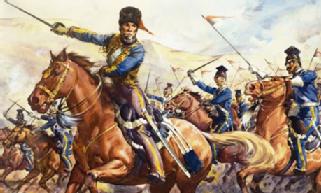
1858. Purpose built archive for state records established at Chancery Lane, London.
1858, 11 December. Daily News publishes 2 sensitive dispatches written by the Lord High Commissioner to the Ionian Islands. William Guernsey, whole stole the documents, escapes punishment.
1873. Sir Ralph Lingren tries to stop civil servants from leaking secrets by issuing a circular stating 'The unauthorised use of official information is the worst fault a civil servant can commit. It is on the same footing as cowardice by a soldier. It is unprofessional'.
1878, 31 May. Foreign office employee Charles Marvin leaks the draft of a secret treaty to the Globe and Traveller. He was brought to trial under the charge of larceny, but acquitted.
1880. Terry Young from Chatham Dockyard passes warship designs to a foreign power.
1889. Parliament passes the Official Secrets Act, criminalising foreign espionage and domestic leaks.
1900-1945
1900. Crime novelist Arthur Conan Doyle writes The Great Boer War. He receives support from the War Office, who provide documents and confidential briefings from serving military officers.
1901. During the South African War, The Times isa reprimanded by the War Office for offering 'pecuniary temptations' to clerks willing to leak news.
1903. Erskine Childers publishes The Riddle of the Sands, a thriller predicting war between Britain and Germany. The novel stirs up public interest in Britain's lack of defensive preparedness. (See below: The Admiralty took great interest in Childers' yarn, since it contained up-to-date maps and charts.)
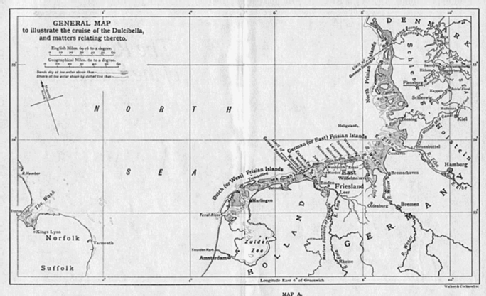
1906, 13 March 1906. Serialisation begins of William Le Queux's The Invasion of 1910. In Oxford Street, peripatetic placard carriers, dressed in spiked helmets and Prussian uniforms, bellow at passers-by, warning them of the Hun's arrival in the nation's capital.
1909, spring. Sub-Committee of Imperial Defence concludes that an 'extensive system of German espionage exists in this country'. Leads to formation of a Secret Service Bureau, which, within a year, would break up into MI5 and MI6.
1911. The Agadir crisis puts the war scare at fever-pitch. Parliamentarians rush to amend the Official Secrets Act. Its leading characteristic is its catch-all quality: all information generated by the state is 'official', regardless of its nature or importance.
1912, 13 August. D-Notice system comes into effrect.
1919, 4 November. Ministers rule that, in retirement, they should a) be able to retain confidential papers in their possession; and b) have access to Cabinet papers generated while they had been in office. Lloyd George walks away with bundles of documents, including the sole copy of the Anglo-Irish Treaty of 1921.
1922, 30 January. The government establishes the 'vindicator clause' allowing for ministers, in their retirement, to publish official documents in refutation.
1923. The Cabinet Secretary, Maurice Hankey (see below), laments that 'Men are very porous, weighty secrets oozing out of them like quicksilver through clay jars'.
1927, 13 December. The secrets of wartime cryptography start to spill out. Sir James Alfred Ewing, a former head of Room 40, gives a lecture to the Edinburgh Philosophical Institution called 'Some Special War Work'.
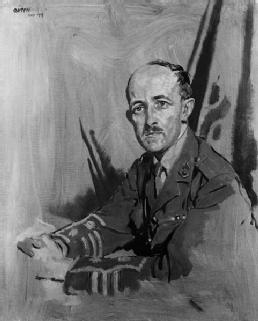
1932. Lloyd George begins to write his memoirs.
1933. Compton Mackenzie publishes Greek Memories and is taken to court.
1934. Edgar Lansbury, the son of Labour leader George, is convicted under the Official Secrets Act. The office: he published a biography of his father, which included unauthorised quotations from two Cabinet memorandums.
1940. Codebreaking begins at Bletchley Park.
1941. Admiral Lord Chatfield is forbidden from publishing his memoir, on the grounds that it 'might cause the Government to break up'.
1945. Former Cabinet Secretary Maurice Hankey is told by wartime premier Churchill that his Great War memoir, The Supreme Command, should never be published. A few months later, Churchill leaves Downing Street and is required to use giant horse boxes to transport tens of thousands of documents to his home in Chartwell.
1946-1959
1945, summer. Legendary investigative journalist Chapman Pincher (see below) begins his career in Fleet Sreet.
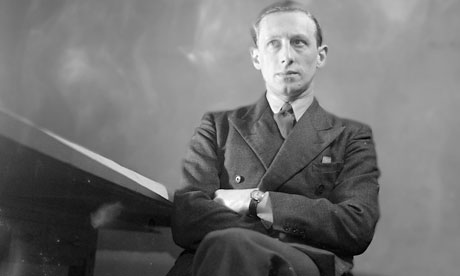
1945, July. The JIC rule that the story of Bletchley Park should 'NEVER be Disclosed'.
1945, November. During the Congressional Inquiry into Pearl Harbor, a fleeting reference is made to the successful decoding of German messages, but this priceless gem does not find its way into the public domain in Britain.
1945, December. John Masterman completes a Top Secret report on the Double-cross system. Only 100 copies were printed. Masterman illicitly keeps a copy.
1946. With a series of backdoor deals, Winston Churchill secures permission to quote at length from secret sources in his forthcoming Second World War histories.
1947, November. Hugh Dalton, Chancellor of the Exchequer, resigns having prematurely disclosed details of his bugdet to a lobby correspondent.
1950. German-born British atomic scientist Kalus Fuchs confesses to espionage. He is tried at the Old Bailey and sentenced to fourteen years' imprisonment.
1951. Another spy scandal: two Foreign Office diplomats, Guy Burgess and Donald Maclean (see below), flee the country and head for Moscow. The BBC Home Service tells its listeners [click]
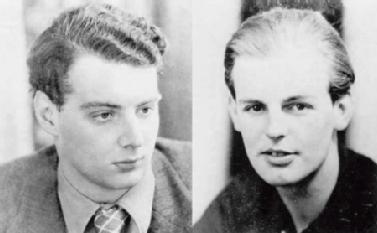
1951. Kenneth de Courcy, editor of Intelligence Digest, complains that MI5 have been harassing his staff. He later claimed that he and his chief Paris correspondent were under round-the-clock surveillance by MI5.
1953 The first James Bond novel, Casino Royale, is published.
1954, April. Australian press reveal that Burgess and Maclean were in fact long-term Soviet agents, recruited in the 1939s while studying at cambridge University.
1955. Former MI5 director Sir Percy Sillitoe breaks new ground by becoming the first intelligence chief to publish a memoir, Cloak Without Dagger.
1955, September. The British government issues a White Paper in the light of accusations that Kim Philby was the 'Third Man' of a larger Cambridge Spy Ring. In Parliament, Harold Macmillan gives Philby what the latter would call 'the happiest day of his life' by announcing that there was no evidence of him being a traitor.
1956, 11 February. The Soviets parade Burgess and Maclean at a spectacular press conference in Moscow.
1956. The Crabb Affair.
1958. The Air Minister, George Ward, calls for security authorities to 'watch Chapman Pincher's movements'.
1959, 4 May. Harold Macmillan, the Prime Minister, asks his Cabinet Secretary: 'Can nothing be done to suppress or get rid of Chapman Pincher' - surel the only time in British history that a Prime Minister has called for a journalist to be 'liquidated', even if not in the literal sense.
1960s
1960. Anthony Eden publishes Full Circle, his richly-documented Suez apologia, but leaves out crucial details of British, French and Israeli collusion in 1956.
1960, May. M.R.D. Foot (below) is commissioned to write the official history of SOE operations in France. He was required to read secret documents in a locked room in a basement, the only means of escape being to ring a bell.
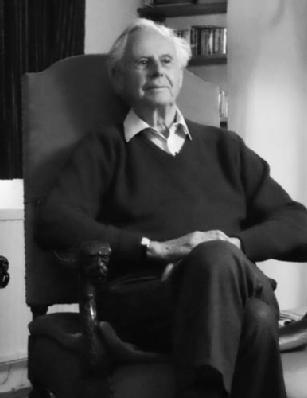
1961. Prime Minister Harold Macmillan mercifully gives Maurice Hankey permission to publish his Great War memoir The Supreme Command.
1961. George Blake (below) is convicted of spying for the Russians and sentenced to forty-two years in prison. (4 years later he would successfully execute a daring break-out, belieived to have been masterminded by the Soviet Union.)
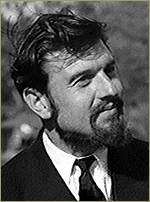
1961. Portland Spies: five Britons - three men and two women - charged at the Old Bailey for passing secrets to the Russians.
1962, 12 September. British civil servant John Vassall is arrested and charged with spying. In october, he is sentenced to eighteen years in jail.
1964. Prime Minister Harold Wilson appoints George Wigg (below) as Paymaster General, but with the added responsibility of being a security watchdog.
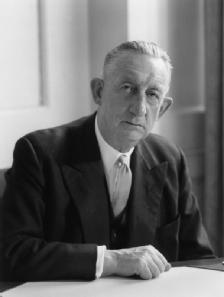
1964. The spate of scandals and leaks convince the civil service to make 'secrecy' posters, to be posted on office walls in full view of staff (see below).

(Courtesy of the British Library)
1965, May. Richard Crossman misplaces some Cabinet papers whilst 'out to dinner'.
1966. SOE in France is published by Her Majesty's Stationery Office.
1967. Britain's Watergate: The D-Notice Affair.
1967. No End of a Lesson, the memoir of former Tory rising star Anthony Nutting, discloses the circumstances surrounding the Sevres Protocol and the secret plotting to invade Egypt in 1956.
1967. The Sunday Times, led by its new crusading editor Sir Harold Evans (below), publish an extraordinary series of articles on the Cambridge spy ring, including stunning new details on 'Third Man' Kim Philby.
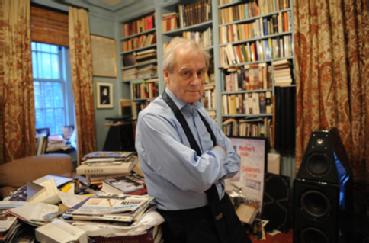
1968. The Fulton Report recommends 'getting rid of unnecessary secrecy' in government. Calls for an inquiry resisted by mandarins.
1968. The exiled Kim Philby publishes a devastating memoir, My Silent War, which described MI6 procedures and personnel in rich detail.
1969. Government agrees to the declassification of WWI sigint records, the 40 O.B. archive. It also sanctions the slow release of Cabinet and departmental records containing references to Ultra.
1970s
1971. John Masterman mischieviously lists his Top Secret history of Double-cross in his Who'sWho entry.
1971. The Scott Report Affair: future Tory MP Jonathan Aitken is charged under the Official Secrets Act for communicating classified information to the Sunday Telegraph about the Biafran war in Nigeria. His is acquitted of all the charges. The judge, Mr Justice Caulfield, calls for the Official Secrets Act to be 'pensioned off'.
1972, 29 September. The Franks Report brands Section 2 of the Official Secrets Act a 'mess' and calls for its repeal. Proposes, instead, a more tightly drawn Official Information Act. The press welcome the report, but push for a fully-fledged Freedom of Information Act. With this, the momentum for change is lost.
1972. John Masterman's The Double Cross System in the War of 1939 to 1945 is published, twenty-severn years after it had been written.
1974. Group Captain Frederick Winterbotham's The Ultra Secret reveals Bletchley Park.
1975. The Crossman Affair
1976, May. The underground entertainment guide Time Out publishes a ground-breaking article, 'The Eavesdroppers', by journalist Duncan Campbell. The article reveals the existence of GCHQ for the first time.
1977. The ABC Trial.
1978. Margaret Thatcher, Leader of the Opposition, threatens to block the publication of H. Hinsley's forthcoming official history of British Intelligence during the Second World War. She states in private: 'I was taught a very good rule by my two Masters at Law, both of whom are now judges: never admit anything unless you have to; and then only for specific reasons and within defined limits'.
1979. Volume I of Hinsley's official history is published.
1979, November. Anthony Blunt is exposed as the 'Fourth Man' in the Cambridge spy ring.
1979, 29 March. Chapman Pincher retires from the Express to focus on a second career as a full-time espionage writer.
1980s
1980. Duncan Campbell, working for the New Statesman, publishes an article alleging that thousands of telephones in Britain were being illegally tapped without the consent of the Home Secretary.
1981. A Committee on Public Records hopes that one day the word 'never' will never again be used in conjunction with public records.
1986. The Zircon Affair.
1986-8. The Spycatcher Affair.
1989. MI5 placed for the first time on a statutory footing.
1989. The Official Secrets Act is amended, with the draconian Section 2 being abolished.
1990s
1991, December. Stella Rimington becomes the first serving chief of MI5 to pose openly for cameras.
1992, 7 May. PM John Major announces in Parliament that Sir Colin McColl is the incumbent head of MI6.
1993. MI5 publishes a glossy bookley entitled MI5: The Security Service.
1993. The Waldegrave Initiative on Open Government.
1994, 12 June. Stella Rimington gives the Richard Dimbleby Memorial Lecture.
1997. MI5 starts transferring its records to the National Archives, Kew.
2000s
2001. Stella Rimington publishes a memoir, Open Secret.

2005, 1 January 2005. Britain brings into effect a Freedom of Information Act, codifying a right of access to information held by most public authorities.
2009. To mark the centenary of its foundation, the Security Service publishes an authorised history, The Defence of thre Realm, written by Professor Christopher Andrew.
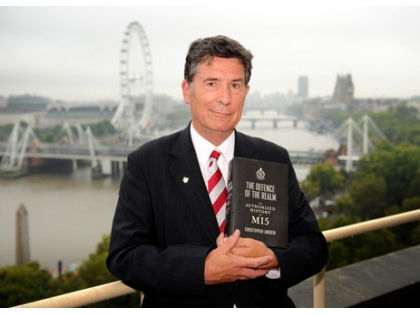
2010. SIS follws suit, publishing MI6: The History of the Secret Intelligence Service by Keith Jeffery.

